Hello, from your friendly neighborhood 1960’s Sherlock Holmes!
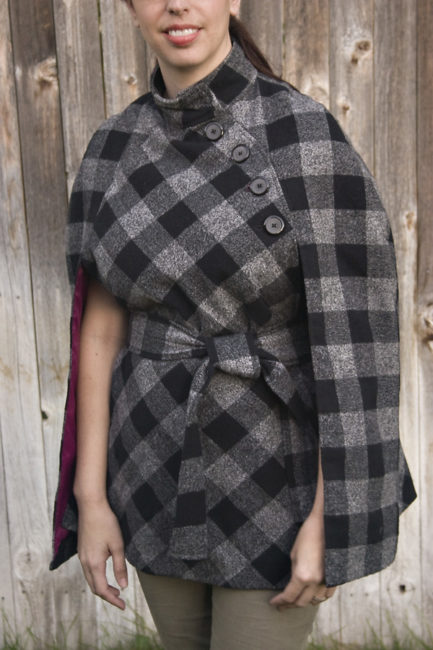
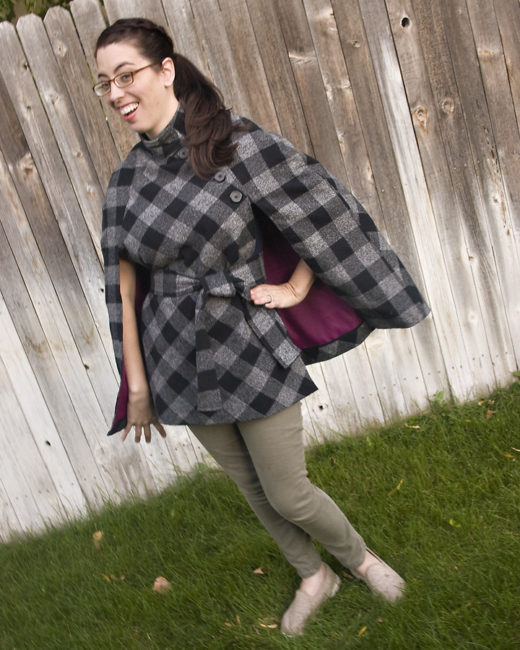
It began with a challenge: “You will have one week (starting 9/14/2016) to cut, sew and photograph a garment made using fabric cut on the bias (45 degree angle).” And so I started with a research visit to my friend theGoogle.
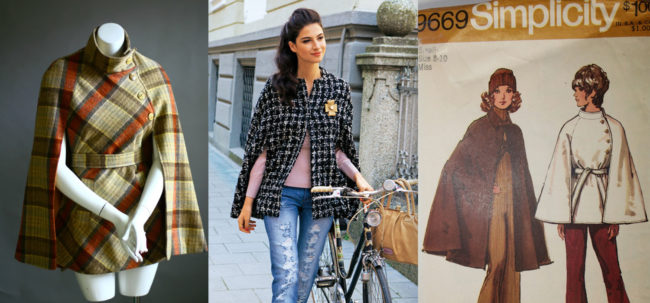
My goal with this garment was to show off the bias as dramatically as possible. In my research I found a photo of a vintage 60s cape on Ebay that was awesome, but of course had no pattern. So I based this cape on Burda Style 08-2011-112, which I own, and redrafted the pieces for fit and style to more closely match Simplicity 9669 (oop) which I don’t own but looked at the pattern piece shapes on the envelope back online.
:::PatternReview.com 2016 Sewing Bee Round 2 Entry:::
{See my full entry, or the gallery of all entries.}
Fabric used – material and yardage:
100% cotton flannel from JoAnn’s. This is heavier than their standard shirting, but not quite coating weight, and with the polyester lining it is just the right weight for a transitional outerwear jacket (cape). I used 3 yards of the plaid and 2.5 yards of the lining.
What other components did you use in your garment (closures, pockets, trim, etc):
I used 1.25″ buttons on the placket along the left raglan line and a sew-in snap on the collar. I also used bias binding along the hems for a clean finish.
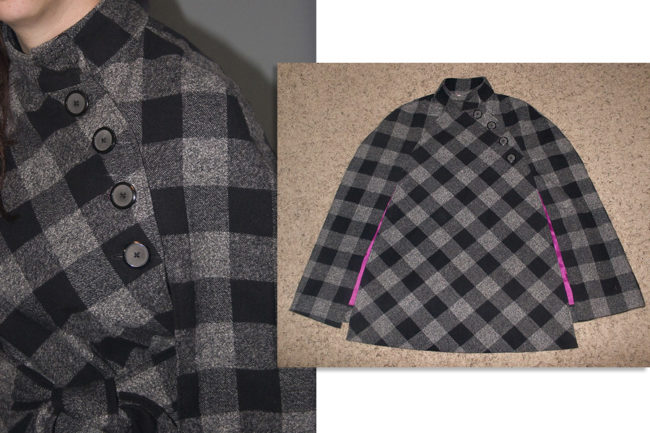
Describe how the bias grain was used in your entry, and why:
As mentioned above, I really wanted to show off the pattern so I used the bias on the front and back panels. I kept the side fronts on grain so it would contrast with the front and really show it off. Also, when re-drafting the pattern from what I had to what I wanted I combined what would have been 4 back pieces into one large piece with darts at the neckline instead of a princess seam so I could use one large piece of fabric. I didn’t want to break up the pattern or have to try to match which would have taken more yardage, time, and effort, for what would have been a less dramatic look.
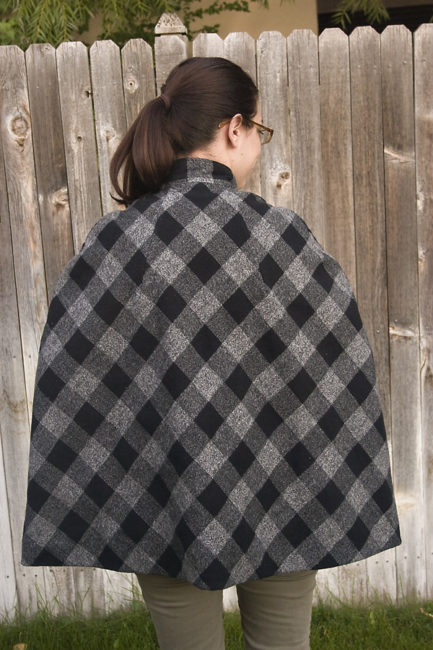
Describe the fitting technique(s) you used to achieve shaping:
I made two muslins for this pattern. My first muslin was the exact Burda Style 08-2011-112 pattern. I didn’t like the closed armholes and all the vertical lines that would cut through my plaid. Also, the shoulders were quite wide so I had to narrow that a bit, straighten out the front raglan line to pull that shaping in a bit tighter, and rework the collar to be a separate collar that went all the way around the neck. Finally, after working a second muslin with my new changes I decided to add another 1.25″ to the hem of the front piece. This will only ever be worn with a belt which cinches the fabric up so that the hems don’t line up. Now with the extra length all the hems line up (easy fake FBA!).

Describe what you like most about your entry:
Everything! I love the drama of the bias pattern along with the unique shape of a cape (I mean really, who else will have a cape?). I am also very happy with my finishing work on this garment. I took the time to line as I went so all the interior seams are encased, and I used bias binding along the hems and hand stitched them using a catch stitch. I also really like the contrast of the bright lining and the more “serious” outer fabric. Really, I love everything!

Describe your biggest challenge in sewing this bias garment:
My biggest challenge was in the planning stages. Since I was making this up and not really following a pattern, I had to figure out my own construction order (and with the lining as I went I had to also consider how to finish all the edges). I thought about this for a long time and considered lots of different options. In the end, I think all that planning really helped me execute a garment I am proud of!
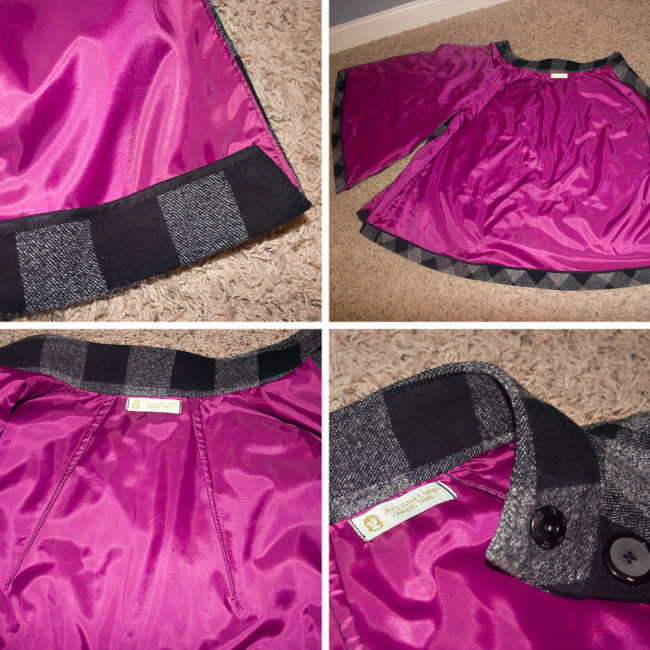
What other information would you like to share about this project and your process?
I laid my fabric out on the floor so I could cut it as one layer, particularly with the bias pieces. On the side fronts I cut one piece and then flipped it over and just lined the pattern up so that it “disappeared” then cut out the second piece, then ensuring they both matched exactly. Also, I found it helpful to make lists for which pattern pieces I needed and the order of assembly so I wouldn’t get confused about what came next.

I can’t wait to find if I make the cut to the next round (I sure hope so) and what the next challenge will be!

Some Leftovers for Ben (Ottobre 06-2011-129) –
[…] whole time I was working on my plaid cape, Ben kept asking if it was for him. So, with the leftover fabric I had just enough to make him a […]
25 . Oct . 2016